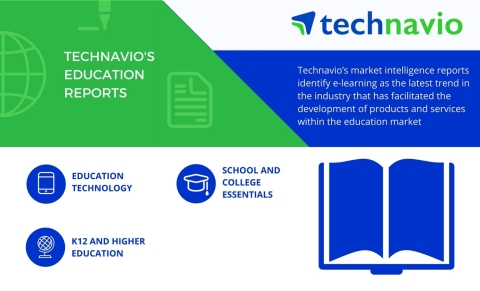LONDON — (BUSINESS WIRE) — November 13, 2017 — Technavio’s latest market research report on the global 3D printing market in education sector provides an analysis of the most important trends expected to impact the market outlook from 2017-2021. Technavio defines an emerging trend as a factor that has the potential to significantly impact the market and contribute to its growth or decline.
This press release features multimedia. View the full release here: http://www.businesswire.com/news/home/20171113005754/en/

Technavio has published a new report on the global 3D printing market in education sector from 2017-2021.
One of the major factors contributing to the growth of global 3D printing market in the education sector is the rising investments in 3D printing technology. Education through 3D printing models and learning content is being promoted by several venture capitalists and investors. They are funding several start-ups both in advanced and emerging economies to strengthen the reach of innovative 3D printing technology.
This report is available at a USD 1,000 discount for a limited time only: View market snapshot before purchasing
Buy 1 Technavio report and get the second for 50% off. Buy 2 Technavio reports and get the third for free.
The top three emerging market trends driving the global 3D printing market in education sector according to Technavio research analysts are:
- Growing popularity of makerspaces
- Evolving 21st-century learning delivery methodologies
- Rising number of online 3D printing courses
Looking for more information on this market? Request a free sample report
Technavio’s sample reports are free of charge and contain multiple sections of the report including the market size and forecast, drivers, challenges, trends, and more.
Growing popularity of makerspaces
Makerspaces are collaborative dedicated working spaces in schools, colleges, and universities. All age groups of students can perform activities, work together and learn in these spaces. These are basically DIY workshops. Materials such as software, hardware supplies, 3D printers, laser cutters, soldering irons, sewing machines, and CNC machines are used by students.
According to Jhansi Mary, a lead analyst at Technavio for education technology, “3D modeling, robotics, coding, and woodworking are some of the skills that the students get to acknowledge and get equipped with by learning through making models and systems on their own. To develop 21st-century skills such as critical-thinking skills and gaining self-confidence in students, makerspaces are very essential. Makerspaces are often available in colleges and schools with different names such as a FabLab or a Techshop.”
Evolving 21st-century learning delivery methodologies
There has been an evolution in learning delivery methodologies. The methodologies have evolved from conventional or traditional classroom teaching or face-to-face instruction to blended learning methodologies. A combination of modern learning methods such as adaptive learning, game-based learning, experiential learning, and project-based learning is present in the blended learning method. All these learning methodologies provide equal weightage to hands-on experience or provide ample practical exposure to students in addition to theoretical concepts.
Educators are also increasingly implementing game-based learning or project-based learning concepts. This is done by using 3D printing lesson plans for effective science, technology, engineering, arts, and mathematics (STEAM) learning. This is in collaboration with step-by-step instructions, photos, downloadable activity sheets, and other engaging or interactive activities, including designing artifacts and building bridges.
Rising number of online 3D printing courses
There has been a gradual increase in the implementation of 3D printing technologies along with the curricula in increasing number of educational institutions such as pre K-12 schools, colleges and universities. Therefore, the online 3D printing courses for both students and educators is increasing. This allows them to understand the basic nuances of using technologies in congruence with the existing curriculum. Additionally, various universities and colleges are collaborating with 3D printing vendors to create and co-teach technology.
“MakerLabs is providing the four-course 3D printing specialization on the Coursera platform to the University of Illinois. This also includes lessons from industry practitioners such as Ultimaker and Autodesk. Owing to the potential of the 3D printing technology and its implementation in the education sector, a rising demand for 3D printing courses in the education sector is expected during the forecast period,” says Jhansi.
Browse Related Reports:
- Global Adaptive Learning Software Market 2017-2021
- Global Coding Bootcamp Market 2017-2021
- Global Mixed Reality Market in Education Sector 2017-2021


